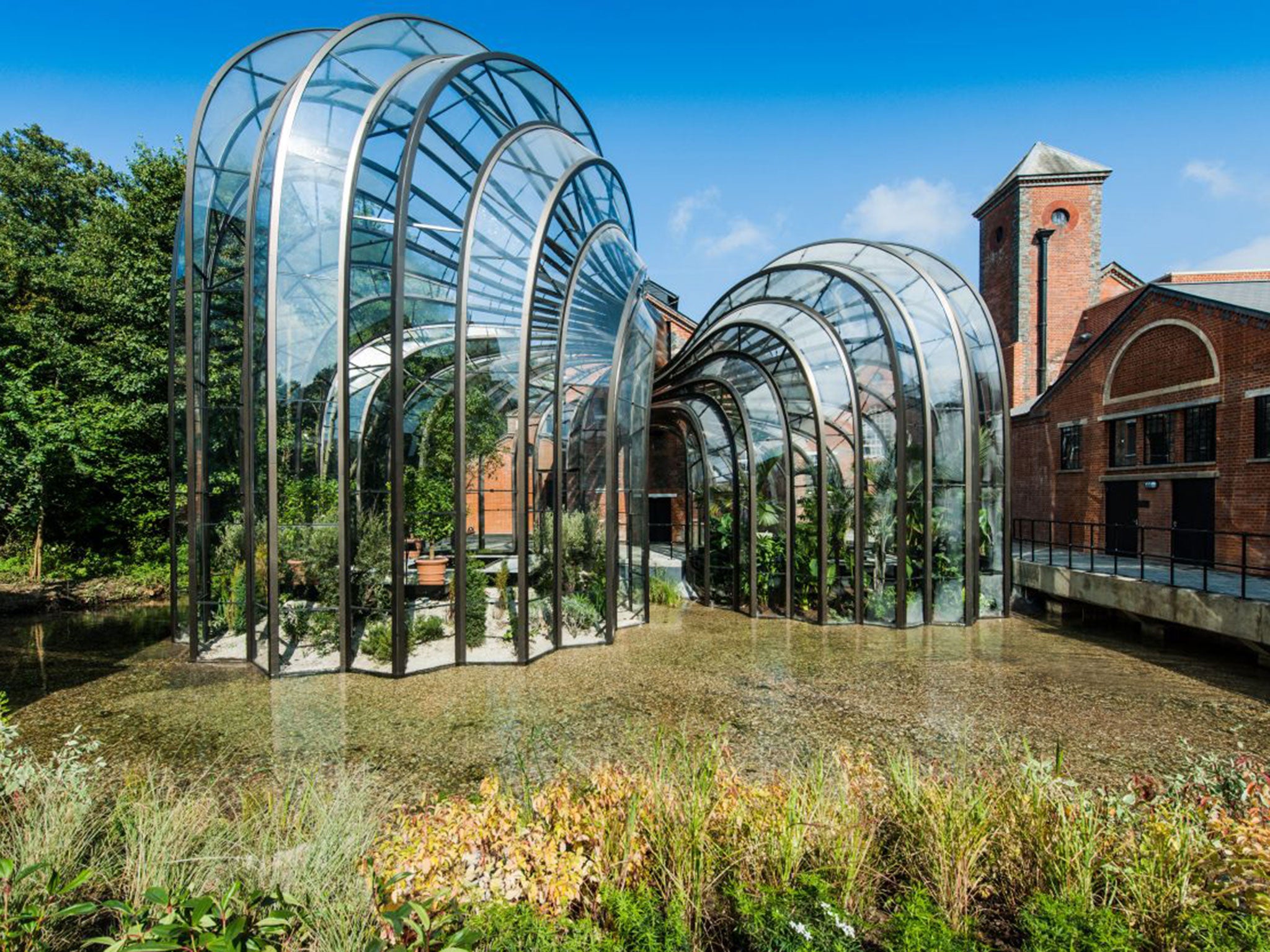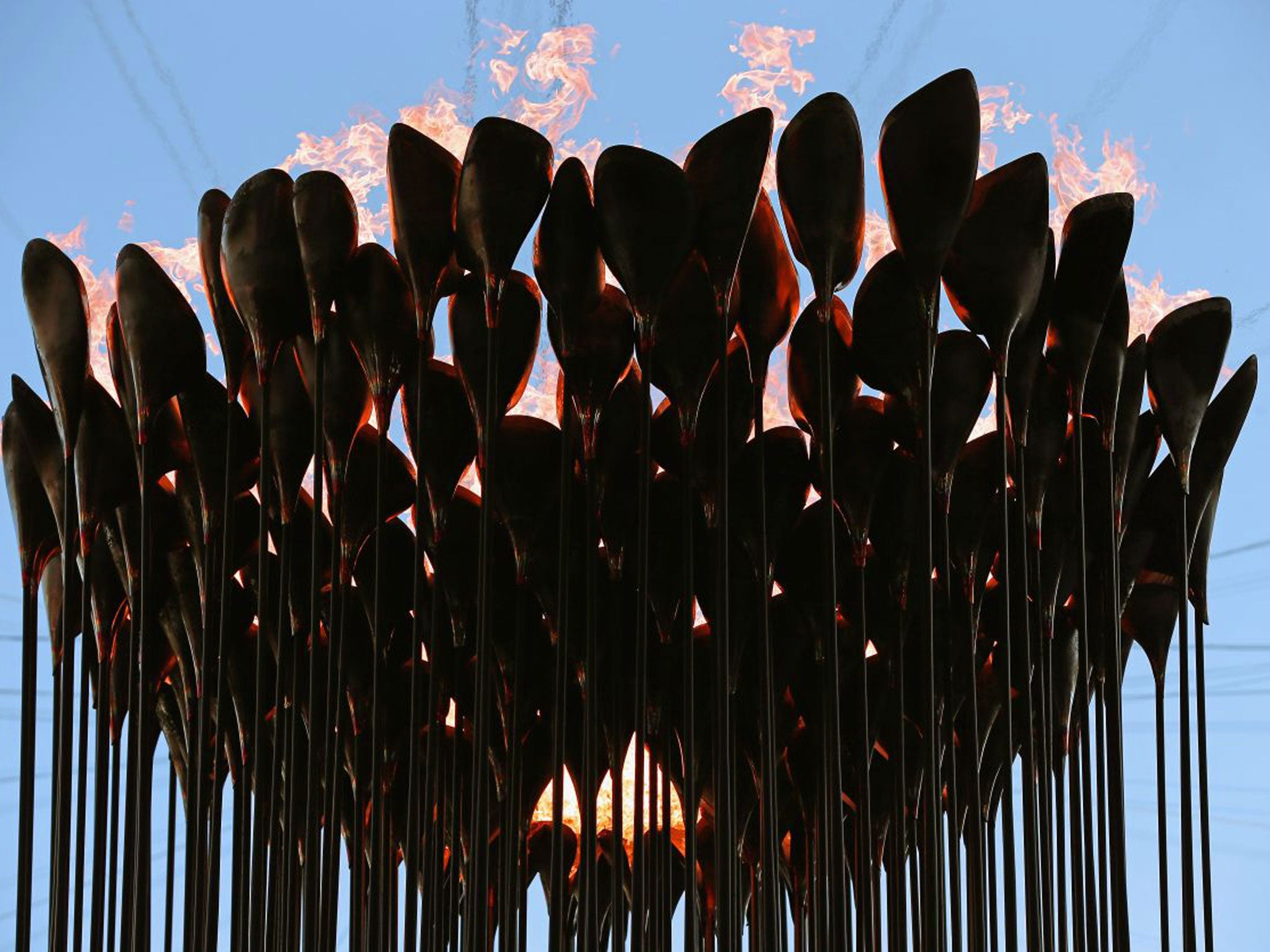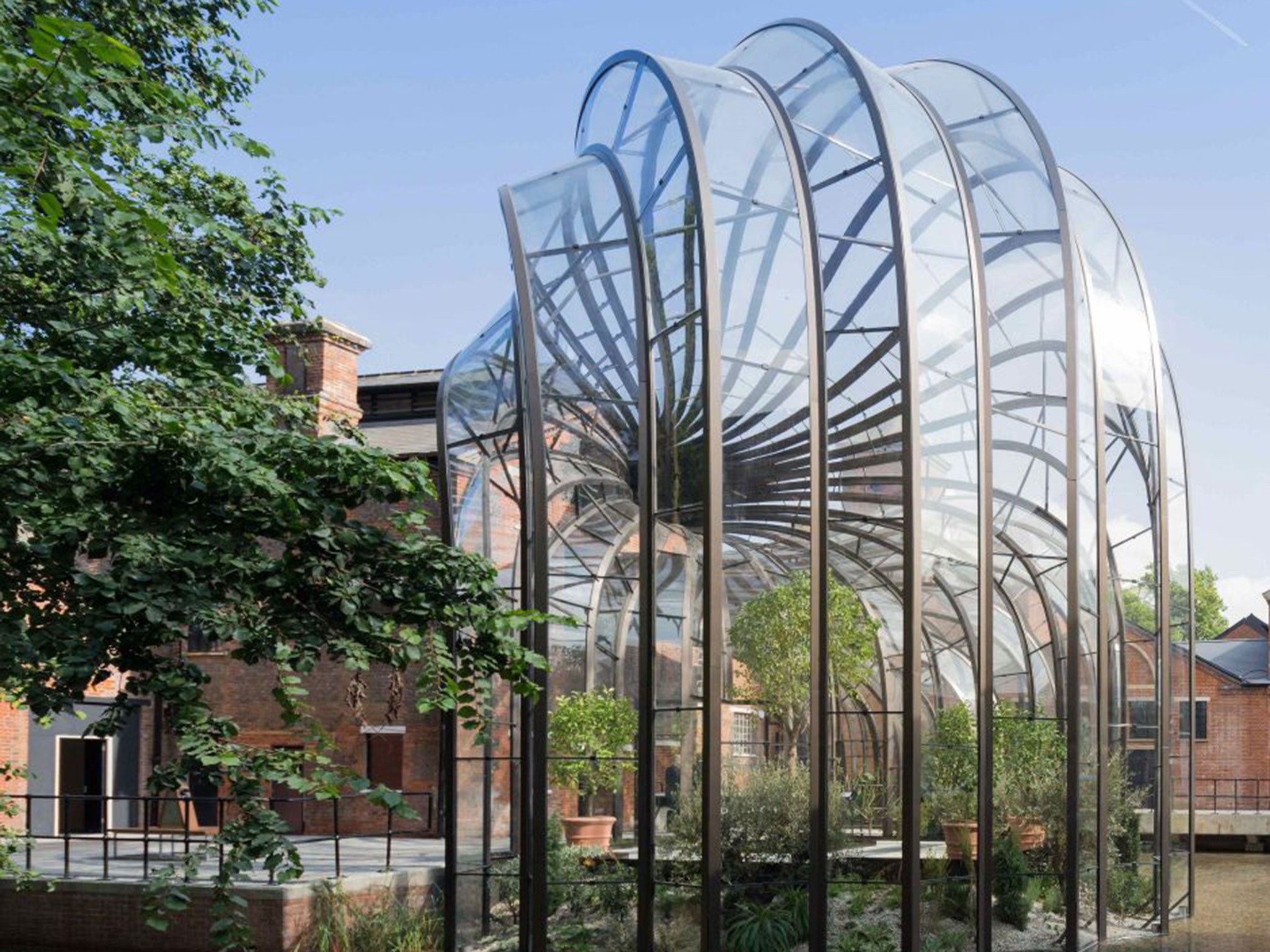Thomas Heatherwick creates gin palace with a fantastical Willy Wonka vibe
Thomas Heatherwick redesigns former banknote mill for Bombay Sapphire distillery in Hampshire countryside

Your support helps us to tell the story
From reproductive rights to climate change to Big Tech, The Independent is on the ground when the story is developing. Whether it's investigating the financials of Elon Musk's pro-Trump PAC or producing our latest documentary, 'The A Word', which shines a light on the American women fighting for reproductive rights, we know how important it is to parse out the facts from the messaging.
At such a critical moment in US history, we need reporters on the ground. Your donation allows us to keep sending journalists to speak to both sides of the story.
The Independent is trusted by Americans across the entire political spectrum. And unlike many other quality news outlets, we choose not to lock Americans out of our reporting and analysis with paywalls. We believe quality journalism should be available to everyone, paid for by those who can afford it.
Your support makes all the difference.Thomas Heatherwick, Britain’s most celebrated designer, has created the coolest gin palace in the world.
The new Bombay Sapphire distillery lies deep in the Hampshire countryside, in a gaggle of Victorian industrial buildings that used to manufacture watermarked banknotes.
The combination of Heatherwick and the Bombay Sapphire brand – with its distinctive blue bottle – is almost too perfect in terms of consumer zeitgeist box-ticking.
Nevertheless, the distillery in Laverstoke Mill, near Whitchurch, has considerable credibility in environmental terms. It’s the only processing plant in Britain that has a BREEAM rating of “outstanding” for building sustainability. Heatherwick’s design masterplan for the restoration and modernisation of the site – an overgrown hugger-mugger of more than 40 buildings congested by ad hoc 20th-century buildings that had overwhelmed the original banknote mill – includes a biomass boiler, electricity-generating water wheel, and a sophisticated heat-recovery system for the five stills.
The makeover has been done with a light touch: the 19th-century character of the buildings remains intact; there are no nasty pastiche “heritage” moments.
“When I first visited the site you could have been in the middle of industrial buildings in Hoxton,” Heatherwick, who designed the 2012 Olympic Cauldron and the New Routemaster bus, said. “There were all these dead-ends everywhere. Buildings had been built over the stream. But it was exciting to have a site that was originally a corn mill, on what is still the purest chalk river in Britain.”

The distillery will produce at least 25 million litres of gin a year. But, more significantly, it will be the first showpiece distillery south of Hadrian’s Wall designed to be a visitor attraction, with restaurants, bars and corporate entertainment facilities, along with cocktail masterclasses. Boutique-style accommodation is also planned.
A fantastical Willy Wonka vibe prevailed at the distillery’s preview. And the pièce de résistance was a classic piece of Heatherwick magic: two greenhouses that swirled up in glinting pleats, like Art Nouveau stills, before Wonka-ing through the end wall of one of the two distillery plants.
Heatherwick cites the glasshouses at Kew and the Crystal Palace as his key 19th‑century inspirations, but he was also seeking to create an original “sensual dimension. It sounds totally stupid to use those words, but I believe in them”.
One of the greenhouses contains the Mediterranean plants used to give the gin its botanical accents; the other houses tropical flavourings. Apart from juniper, the original and most classic gin flavouring, the 10 plants include orris root, angelica, and Chinese liquorice. The greenhouses, and the widened banks of the Test chalk stream that flows through the two-hectare site, were planted by experts from Kew Gardens.

And what’s this place like? Without throngs of the expected 100,000 visitors a year, almost everything about the operation is faintly eerie. There are vague simmering sounds coming from the beautiful, 30ft-high Italian-made copper stills; neat gin sloshes constantly through the brass-and-glass gin safes, from which test samples are taken.
In the Empire Bar, the tippler is confronted with a beautifully made, clock-like diagram setting out 170 gin-based cocktails; in the Dry Room, samples of the 10 botanicals are set out in flasks, as if in a laboratory of gin-related Eureka moments.
The project, as a whole, takes Heatherwick further into the realms of architecture, as opposed to the often brilliant smaller-scale objects that made him famous.
Join our commenting forum
Join thought-provoking conversations, follow other Independent readers and see their replies
Comments